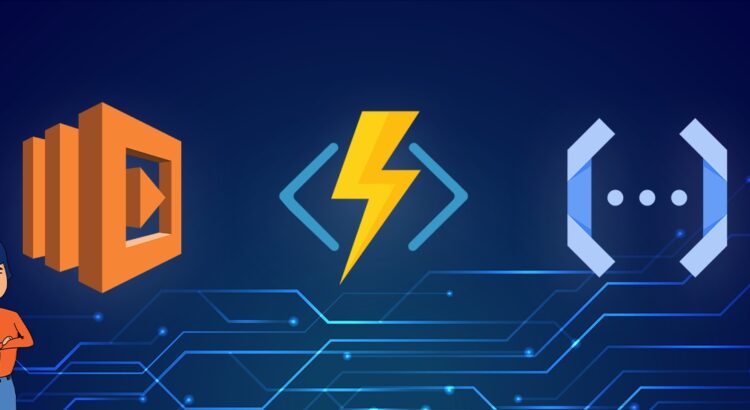Serverless architecture is transforming the way developers build and deploy applications. For those in a Java full stack developer course, understanding serverless architecture can be a game changer. This approach allows developers to focus more on writing code and less on tasks like managing servers. Let’s dive into what serverless architecture is and how it can benefit full stack projects.
What is Serverless Architecture?
Serverless architecture doesn’t mean there are no servers. It means developers don’t have to manage the servers themselves. Instead, cloud providers handle server management. You only pay for the resources you use. This makes it easier to scale various applications and reduces operational overhead.
Advantages of Serverless Architecture
- Cost Efficiency
Serverless architecture is cost-effective. You pay only for the execution time of your code. There are no server maintenance costs or idle resources. This can be particularly advantageous for various projects with variable workloads.
- Scalability One of the biggest advantages is scalability. Serverless platforms can be automatically scaled up or down based on demand. You don’t need to worry about provisioning or managing server resources. This is ideal for applications with fluctuating traffic.
- Reduced Operational Complexity
Managing servers can be complex and time-consuming. Serverless architecture abstracts away the entire underlying infrastructure, allowing you to focus on building features. This reduces the operational complexity and accelerates development.
How Serverless Fits into Full Stack Projects
In full stack development, serverless architecture can enhance both the front and back end of your application.
- Front End Integration
On the front end, serverless functions can be used to handle specific tasks, such as form submissions or data retrieval. This can offload some of the processing from the client side to the serverless environment, improving performance.
- Back End Flexibility
For the back end, serverless functions handle business logic and data processing. You can create RESTful APIs or microservices that scale automatically with demand. This flexibility allows you to build scalable and maintainable back-end systems.
Common Use Cases for Serverless in Full Stack Projects
- API Development
Serverless functions are ideal for building APIs. They can handle requests and responses without the need for a dedicated server. This makes it easy to create and deploy APIs that scale with your application’s needs.
- Data Processing
Serverless architecture is also great for data processing tasks. You can use serverless functions to process data from various sources, such as user inputs or external APIs. This allows for real-time data processing without managing infrastructure.
- Event-Driven Applications
Serverless is well-suited for event-driven applications. For example, you can use serverless functions to respond to events like file uploads, database changes, or scheduled tasks. This helps in building responsive and dynamic applications.
Getting Started with Serverless
- Choose the Right Provider
Several cloud providers offer serverless services, such as AWS Lambda, Google Cloud Functions, and Azure Functions. Choose the one that best fits your project requirements and integrates well with your technology stack.
- Understand Billing Models
Familiarize yourself with the billing models of different serverless providers. Understand how you are charged for usage, such as the number of requests or execution time. This will help you manage costs effectively.
- Integrate with Your Full Stack
Start integrating serverless functions with your full stack application. You can use serverless functions for specific tasks and gradually expand their use as needed. This helps in leveraging the benefits of serverless architecture without overhauling your entire system.
Challenges of Serverless Architecture
- Cold Start Latency
One challenge with serverless functions is cold start latency. This is the delay that occurs when a function is invoked for the first time after being idle. While it’s generally minimal, it can impact performance in some scenarios.
- Debugging and Monitoring
Debugging and monitoring serverless functions can be more complex compared to traditional server environments. Use the tools provided by your specific cloud provider to monitor and troubleshoot issues effectively.
- Vendor Lock-In
Serverless architectures can lead to vendor lock-in. Since different providers have different implementations and features, migrating between providers can be challenging. Be mindful of this when designing your serverless solutions.
Conclusion
Serverless architecture offers significant advantages for full stack projects, including cost efficiency, scalability, and reduced operational complexity. For those in full stack developer classes, understanding and leveraging serverless can enhance your development process and improve application performance. While there are challenges, the benefits often outweigh them, making serverless a valuable approach in modern software development.
Business Name: ExcelR – Full Stack Developer And Business Analyst Course in Bangalore
Address: 10, 3rd floor, Safeway Plaza, 27th Main Rd, Old Madiwala, Jay Bheema Nagar, 1st Stage, BTM 1st Stage, Bengaluru, Karnataka 560068
Phone: 7353006061
Business Email: enquiry@excelr.com





